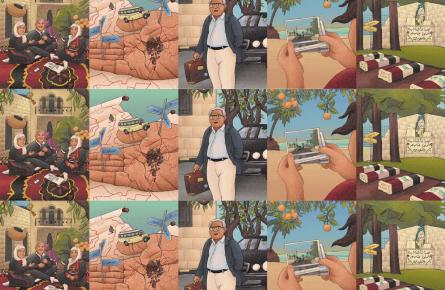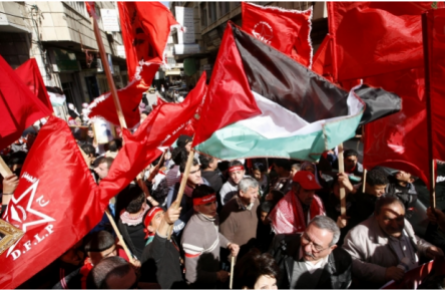
It is said that a picture is worth a thousand words, presumably for what it depicts, but what is the value of what a picture doesn’t show? To some, it is nothing; for others, it is everything.
For Israelis and, indeed, much of the Western world, one photograph from the conflict, which Israelis call the Six-Day War, is the most remembered, and immediately recognizable: David Rubinger’s iconic image of three Israeli paratroopers standing next to the Western Wall. In the image, the three soldiers stare up, almost beyond the Wall, as if envisioning what was yet to come after this moment. The image fits squarely within the Zionist narrative, heralding reclamation, triumph, and hope.
But, when one compares the photo with images of the Western Wall today, there is something odd about it. It focusses closely on the paratroopers and not on the massive, wondrous Wall. Perhaps this is because today, the images of the Western Wall that we are familiar with include not only most of the expansive Wall itself but also the spacious plaza in front of it, sometimes filled with worshippers.
When Rubinger took the photograph, there was no Western Wall Plaza. Instead, there were homes. Palestinian homes that made up the Mughrabi quarter, which historians could trace back seven centuries. The shot, it seems, was tight because the paratroopers were standing in an alleyway between the Mughrabi neighborhood and the Wall.
What happened to the neighborhood? In the days after the photo was taken, the residents either fled or were forcibly evicted, and the homes were razed to the ground by Israeli bulldozers. One resident, a woman, was killed when the house she was in was bulldozed on top of her. Her name was Rasmiya al-Tabaki. The deliberate destruction of civilian infrastructure in occupied territory is prohibited under the Fourth Geneva Convention. For Palestinians, the Western Wall Plaza as we know it today is the site of a war crime.
This iconic scene showcases the Zionist vision while omitting the Palestinians in its midst, days before the Palestinian homes outside its frame were erased. The unity of this vision, and the practice of physical removal, is something Palestinians experienced years before 1967. Indeed, since the erection of the Israeli state, the vision of Jewish majoritarian control led to policies that denied equal treatment under the law to non-Jews, denied return to Palestinian refugees, and physically destroyed hundreds of Palestinian villages that dotted the landscape.
What Rubinger’s image chronicled on that day in June of 1967 was the arrival of Zionist vision and practice into new territory. What followed over the next fifty years was the implementation of this vision across the West Bank. Israeli settlements were built on private and public Palestinian land, and privileged by the state, while Palestinian towns and villages were neglected, just as pre-state Jewish settlements were built and Palestinian villages razed.

Water was diverted to benefit Jewish settlements at the expense of Palestinian villagers. Palestinians were blocked from using new roads constructed to facilitate travel for settlers. Israelis can drive by an occupied Palestinian village without ever having the sight of it stir their conscience, thanks to massive concrete walls obscuring the view. Likewise, throughout Israel itself, Jewish National Fund-planted trees obscure the sight of destroyed Palestinian villages across the scarred landscape. Laws to protect Israeli settlers on the West Bank and deny the rights of Palestinians are enforced, just as earlier laws placed Arab towns in Israel under martial law while Jewish towns enjoyed free movement.
For Palestinians, June of 1967 and the demolition of the Mughrabi quarter did not mark the beginning of something but, rather, the extension of it. The depopulation of Palestine in 1948, and the subsequent creation of an Israeli state that denied return to the native inhabitants, is referred to by Palestinians as the Nakba, or “catastrophe.” The occupation of 1967 is called the Naksa, or “setback.” Both are inseparable parts of the singular historical trajectory of Palestinians.
So what does it mean that we have arrived at the half-century mark of military occupation in the West Bank and Gaza? Occupation is supposed to be a temporary condition—the outcome of war that should ultimately result in the return of occupied territory to a self-determining people. States are not supposed to acquire territory through belligerent occupation. Yet today Israel’s occupation has proved one of the most stable, long-lived realities of the Middle East. Outlasting Mubarak and Qaddafi, the fifty-year Israeli military occupation is more entrenched today than it has ever been. The prospects of withdrawal have never been smaller.
A key reason for the occupation’s persistence is precisely the popular notion that it is a temporary condition. This allows Israel to present the situation as one that does indeed have an end. There is a light at the end of the tunnel that can be reached through negotiations with the Palestinians. That message is delivered in word by Israeli leaders even as, in deed, Israeli bulldozers continue to build settlements for Jews while demolishing homes for Palestinians. Time, we are told, is always running out for a two-state solution, and yet it never actually runs out. For Palestinians, this urgency with an open-ended deadline is no urgency at all, and instead belies the very real human-rights crisis that Palestinians continue to endure.
Israel needs the world to believe that its permanent presence in occupied territory is temporary to fend off the international opprobrium that would follow an acknowledgement of the reality.
Marking fifty years means that it is time to admit that the intention of occupation policies is not a temporary condition but a permanent one. It means recognizing that the Israeli state denies self-determination to millions of Palestinians who live there.
This half-century mark means widening the frame and realizing that between the Jordan River and the Mediterranean Sea, half the residents or more live as either second-class citizens or noncitizens because they are Palestinians. It means looking critically at David Rubinger’s photo and the Zionist narrative, seeing the Palestinian communities just beyond the edge of the lens, and finally bringing them into focus.
This article first appeared in The New Yorker.




